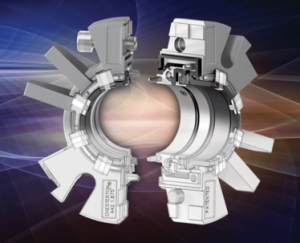How can equipment and operation conditions affect seal leakage?
 Mechanical seal technology is commonly regarded as the best sealing solution for controlling leakage in rotating equipment. While some users think they should have no leakage, mechanical seals are designed to have a low level of controlled leakage in order to maintain a fluid film over the seal face in order to function effectively. This leakage in most cases is not visible.
Mechanical seal technology is commonly regarded as the best sealing solution for controlling leakage in rotating equipment. While some users think they should have no leakage, mechanical seals are designed to have a low level of controlled leakage in order to maintain a fluid film over the seal face in order to function effectively. This leakage in most cases is not visible.
There are however a number of factors that users can look out for that can lead to excessive leaking and premature seal failure. In this article, we look at how equipment and operating conditions can affect seal leakage.
Mechanical seals are made up of two non-porous, highly lapped parallel faces that maintain a small gap in order to operate as the dynamic components of the seal.
Mechanical seals are designed to keep the dynamic surfaces of the seal faces flat and parallel. If a seal can maintain this then it will have optimal life, however when the seal faces open beyond their designed limit and leak, it is a sign that the seal is beginning to fail.
There are a number of factors that cause seal faces to open and fail prematurely, including pump operation, seal design and maintenance practices.
Equipment and operating conditions
Pump conditions
Seal leakage rates can vary depending on the pump and motor conditions. Three conditions that can lead to higher leakage rates or seal failure include:
1.Vibration
Excessive vibration caused by bent shafts, pump and drive misalignment, worn or loose bearings, and unbalanced rotating components can damage the seal faces and cause the seal face to open.
2. Excessive radial or axial movement
While some pump operations are designed to have increased radial or axial movement, in excess they can cause damage, increased leakage and reduced seal life.
Excessive radial or axial movement can be caused by poor maintenance, or pump operation outside its designed best efficiency point (BEP). This can cause seals to run beyond their allowable runout tolerances and cause internal contact of components resulting in seal face damage.
Excessive axial movement, in particular, can result in overloading or underloading of the dynamic surface, causing excessive wear or unloaded seal faces, which allows product to get between them.
3. Shaft misalignment
Shaft misalignment can cause a number of issues for mechanical seals. If misalignment is excessive, seal components can come into contact with the inside diameter of the stuffing box, rotating shaft, or sleeve. This contact will cause mechanical damage to both seal and pump, which inevitably will lead to seal failure.
Depending on the design of the seal, shaft misalignment can cause springs to work excessively which can lead to spring failure and the seal faces opening.
According to Jason Lynch, Director at FITT Resources, these three factors can be managed through regular maintenance and good operations practice.
“Undertaking maintenance regularly will ensure the pump remains at optimal operating performance. Good pump operation practice is also important in helping seals last longer as it reduces the chance of damage.
“Consider the mechanical seal as the fuse of the pump because like an electrical fuse it is generally the first part to fail. Therefore, it is important to take notice of pump operation and maintenance practices so the equipment is operated within its design point. Monitoring practices inside this design point will allow optimal equipment operations and, in turn, reliability, ensuring maximum seal life.”
In the next article we’ll look at how seal design can have an effect on seal leakage.
